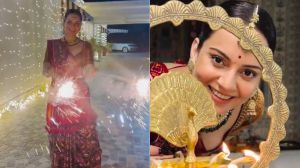We all associate Christmas with practices such as exchanging gifts and cards, singing carols, attending church services, having special meals, displaying decorations like Christmas trees, lights, garlands, wreaths, mistletoe and holly, and Santa Claus bringing gifts to children. However, there are many places across the globe where people celebrate the annual festival commemorating the birth of Jesus Christ a bit differently.
Sweden
In central Gavle, Sweden, local community groups erect the ‘Gavle Goat’, a giant version of a traditional Swedish Yule Goat figure made of straw, at the beginning of Advent over a period of two days. The Yule Goat has been a Swedish Christmas symbol dating back to ancient pagan festivals. According to reports, the goat is more than 42 feet high, 23 feet wide, and weighs 3.6 tonne. Since 1986, two separate Yule Goats have been built in Gävle: the Gävle Goat by the Southern Merchants and the Yule Goat built by the Natural Science Club of the School of Vasa.
Also Read: Merry Christmas 2022: History, celebration, significance, wishes, and all you need to know
Iceland
The Icelandic Christmas period is an intriguing mixture of religious practice and traditional folklore, beginning on December 23 and ending on January 6 (Epiphany). People in Iceland celebrate the festival with good food and gifts to loved ones, but unlike most other countries that have a single Father Christmas / Santa Claus character, Icelandic children are visited by 13 Yule Lads. Kids place a shoe in their bedroom window each evening in the 13 days before Christmas. Every night, one Yule Lad visits, leaving sweets and small gifts or rotting potatoes, depending on how that particular child has behaved on the preceding day.
Norway
In Norway, it’s a tradition to hide brooms in closets on Christmas eve, as it is said that witches and demons ride on brooms among the people on that day. So, they follow the pagan belief to keep the wizards from flying about. As part of another Christmas superstition in the country, children place a bowl of special porridge for a little gnome or elf called Nisse, who guards all the farm animals. If they don’t do it, Nisse will play tricks on them.
Austria
In Austria, it’s not Father Christmas or Santa Claus who brings the presents but the ‘Christkind’ (the Christ Child, Baby Jesus) that comes in the form of an angel, with white feathery wings, a halo above its head, and blond curls.The presents are not opened on December 25, but a day before on Christmas Eve. In some regions of the country, children toss their Christmas letters into the fireplace to make their Christmas wishes come true. In others, they put their letters on the window sill, so that the Christkind can collect them.
Also Read: Eat, Drink, and Jingle: Restaurants offering a special Christmas menu and discounts
Japan
In Japan, it’s almost customary to eat chicken during Christmas. Even though Christians are a small minority in the country, Christmas is celebrated as a secular holiday with people flocking to their local KFC outlets and having their favourite meals. Since the 1970s, ‘Kentucky for Christmas’ or ‘Kurisumasu ni wa kentakkii’ has been embedded in Japanese culture as a part of the local Christmas tradition and celebrations. This time of the year is also when KFC Japan sees their highest sales, with December 24 being the busiest day of the year — ten times higher than KFC Japan’s annual average.
Philippines
Every year, people in the city of San Fernando in the Philippines organise the Giant Lantern Festival, or Ligligan Parul as it is locally called, featuring giant parols (lanterns). Each parol consists of thousands of spinning lights that illuminate the night sky. The original form of the tradition began somewhere between 1904 and 1908 but evolved to the modern version of the festival sometime in the 1930s after electricity was introduced to San Fernando. In its earliest form, the Giant Lantern Festival was a religious ceremony called lubenas. Because of the popularity of the festival, San Fernando has been nicknamed the ‘Christmas Capital of the Philippines’.









